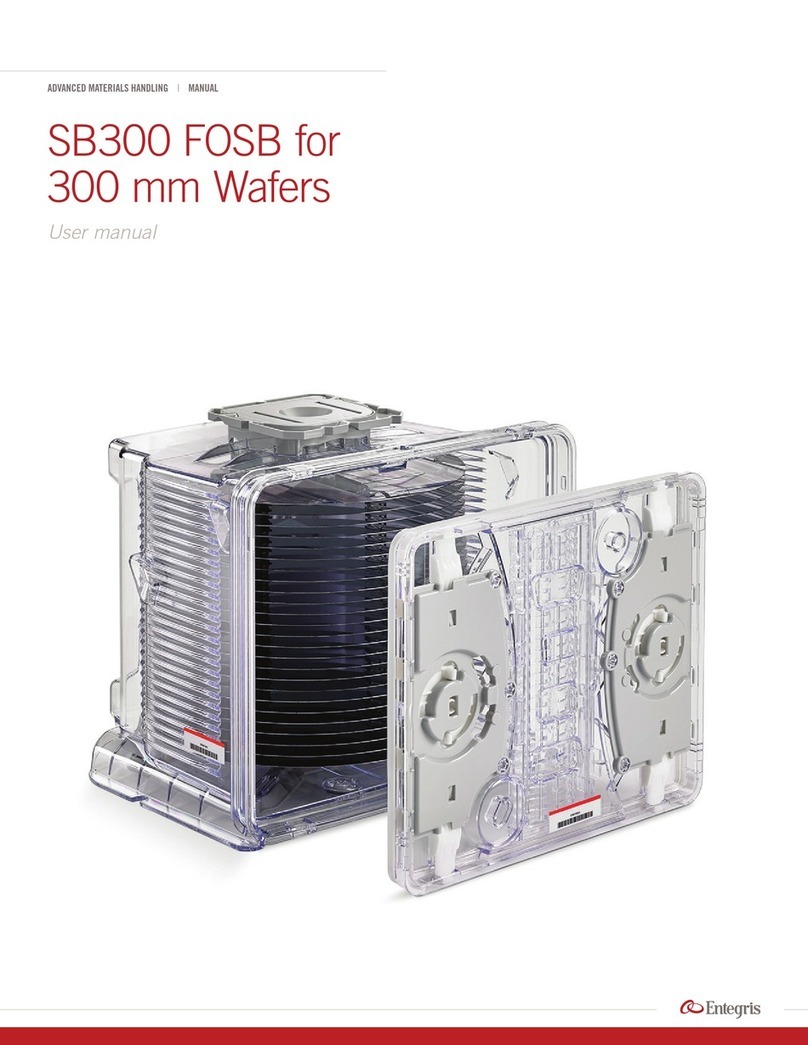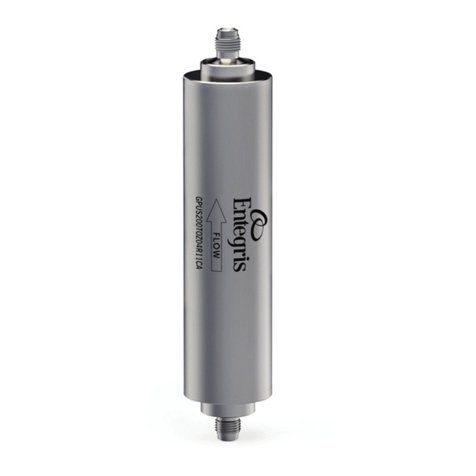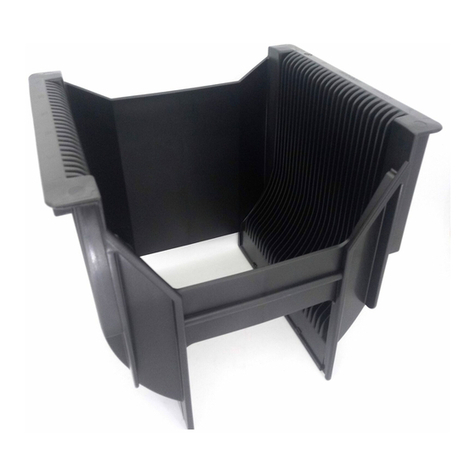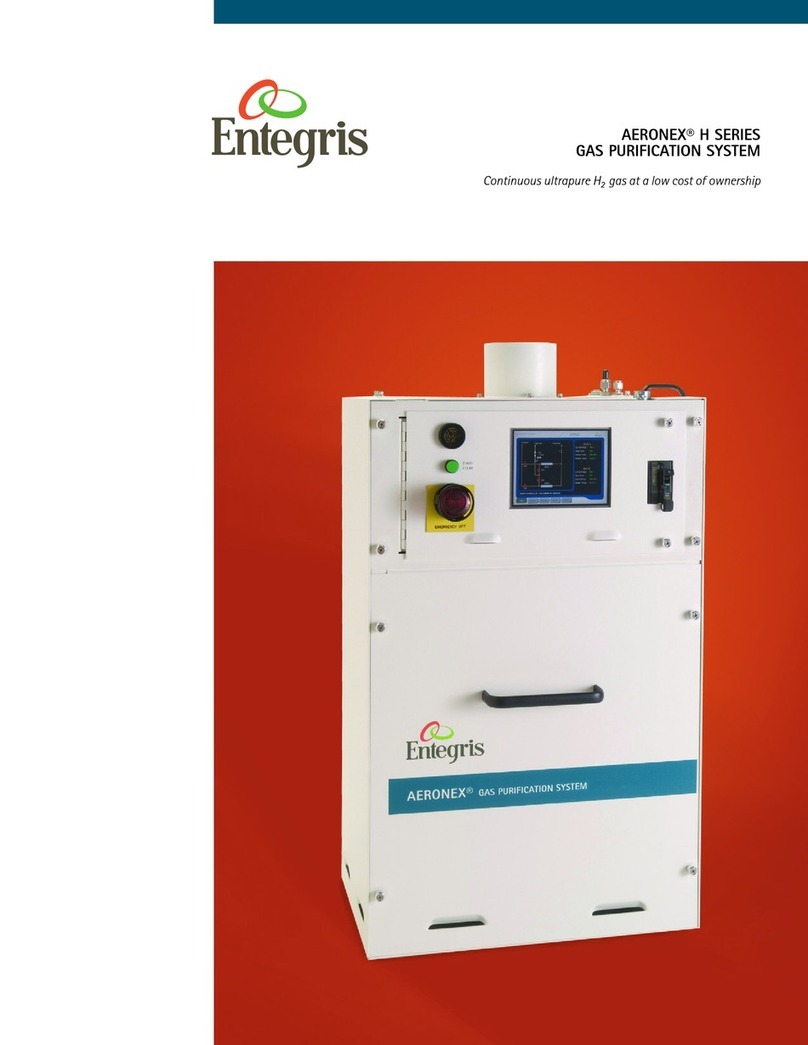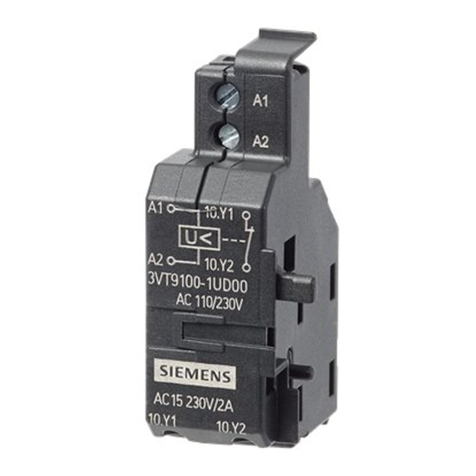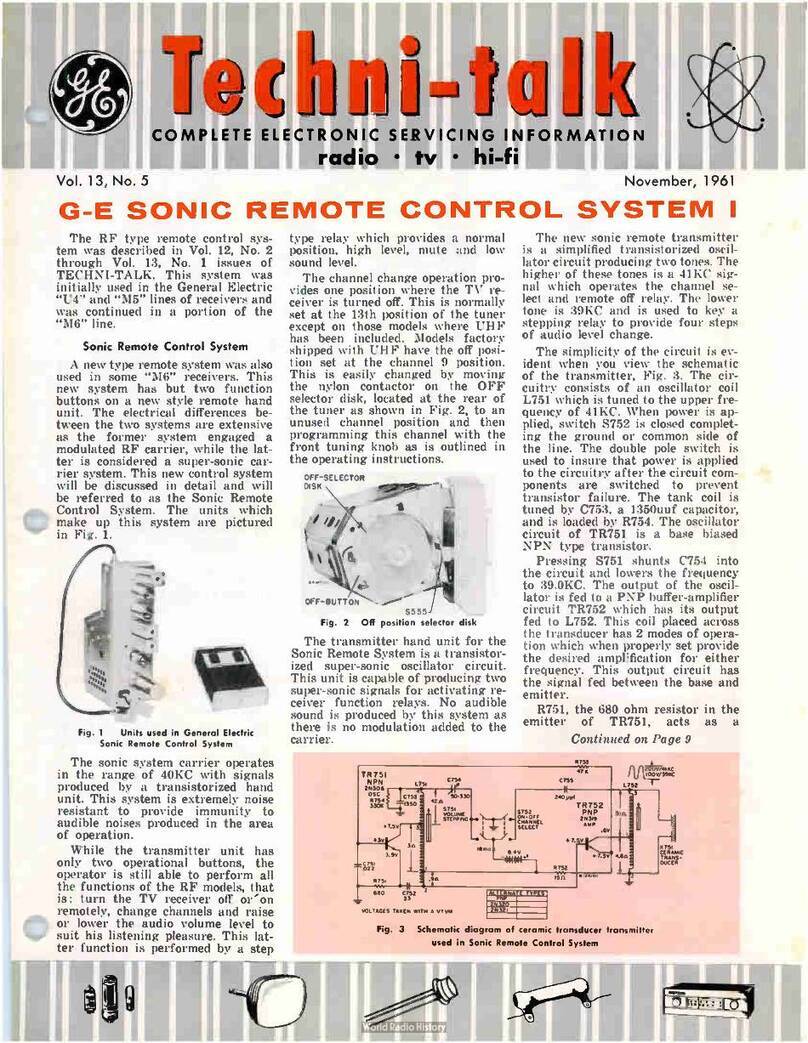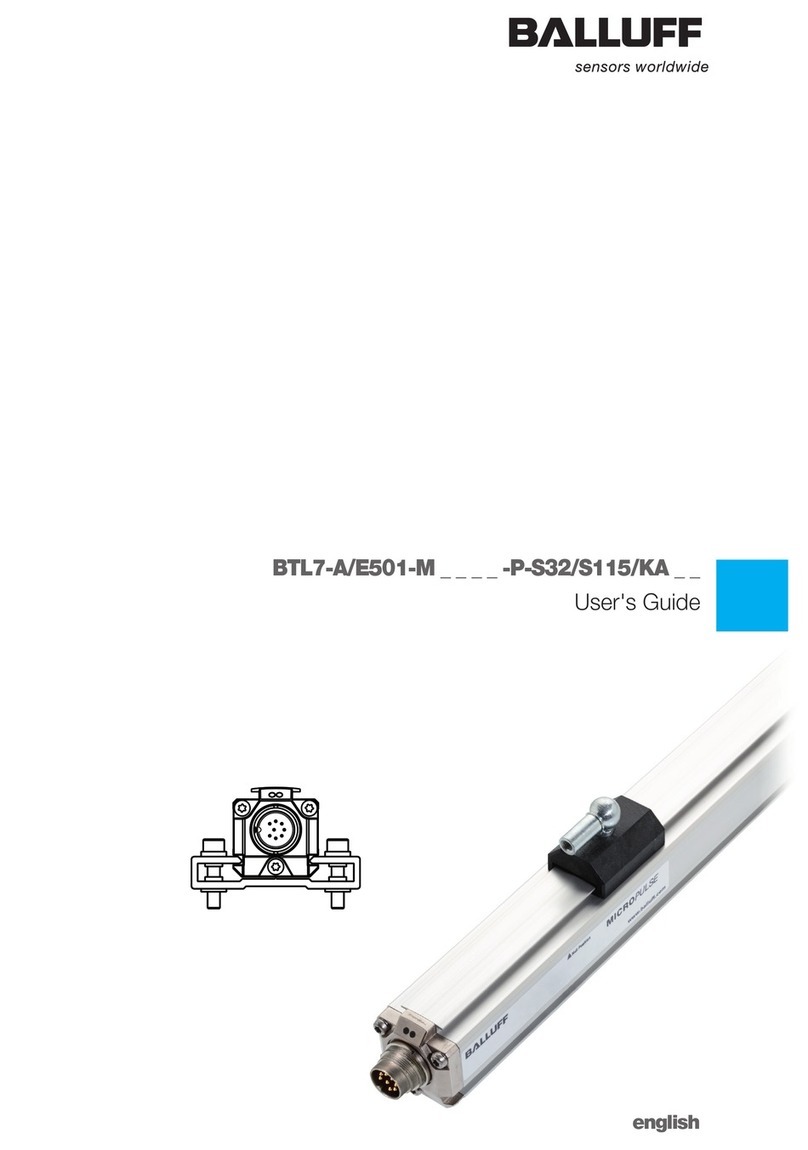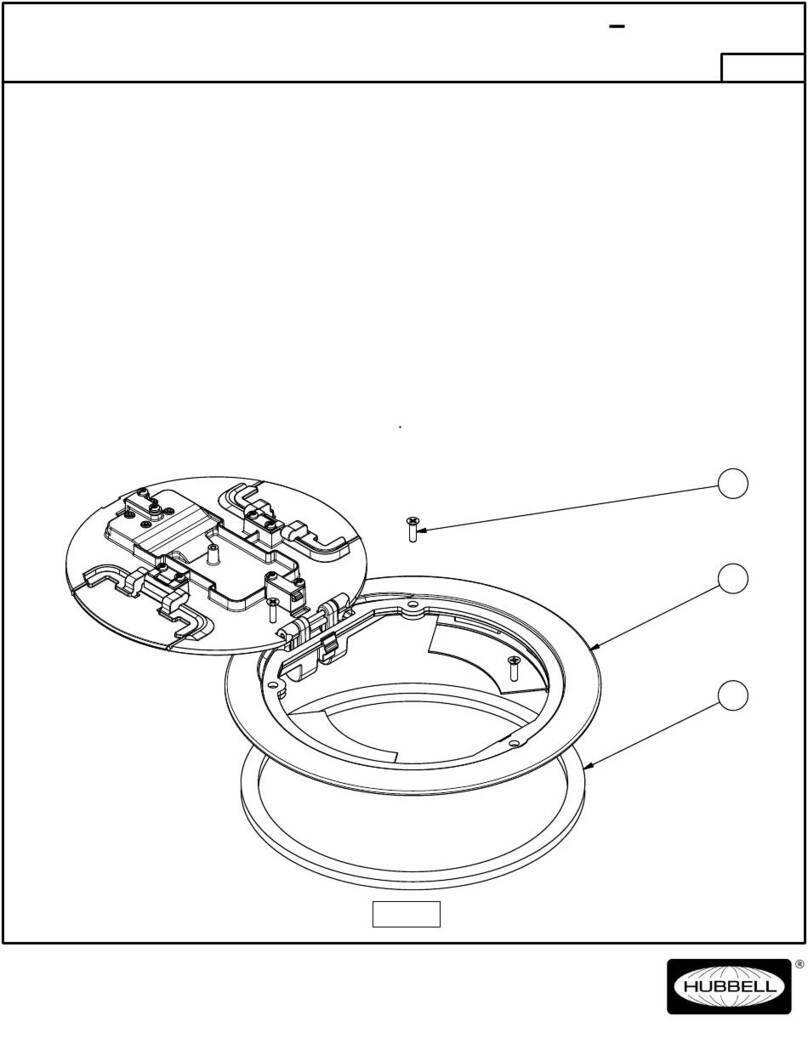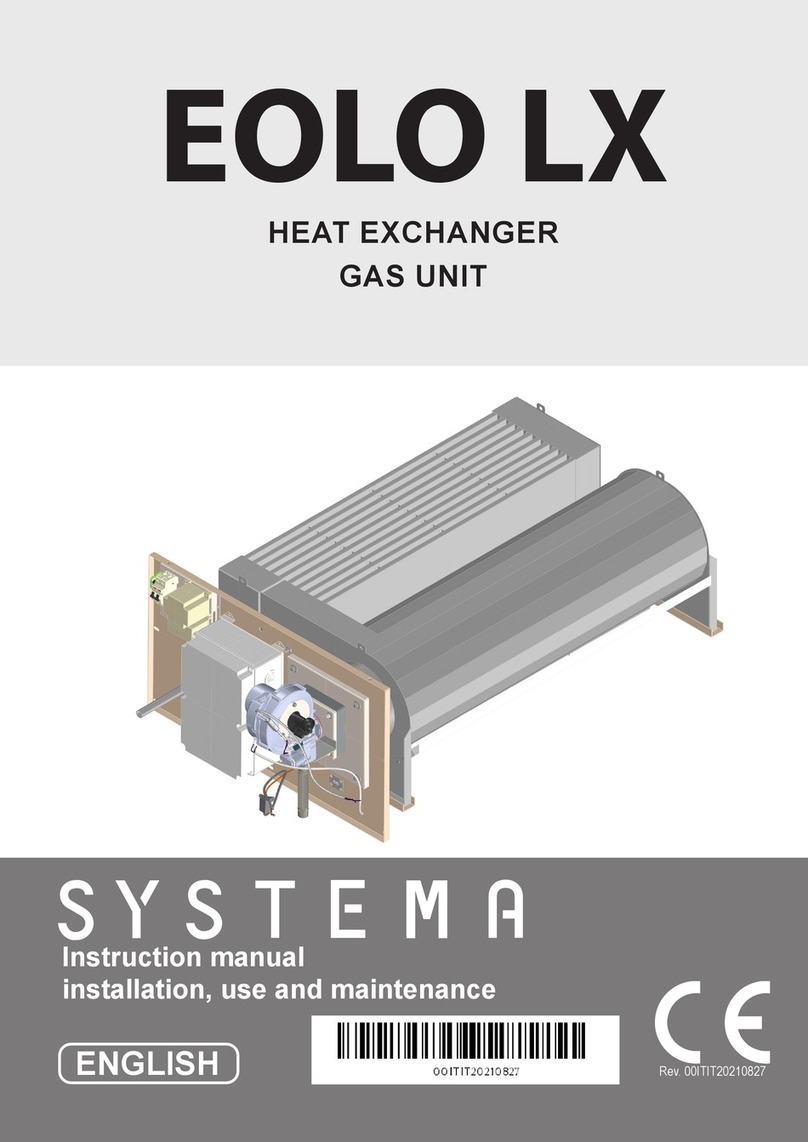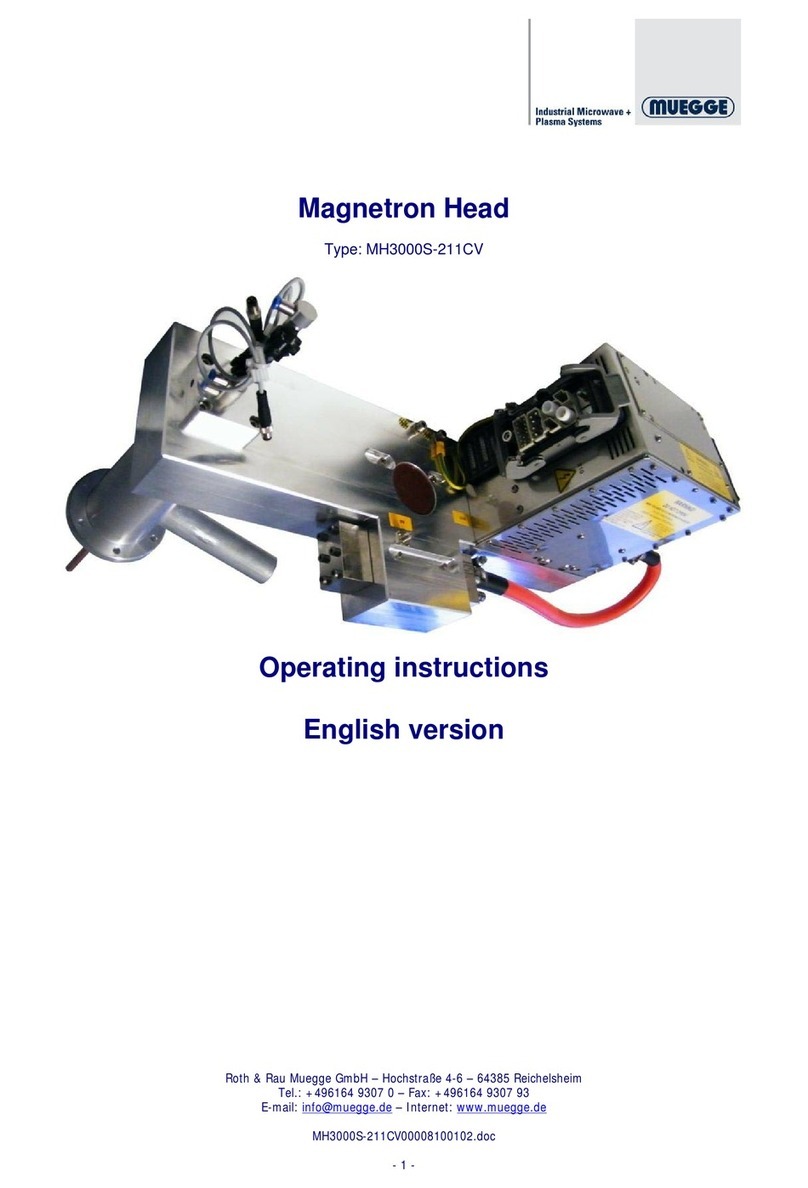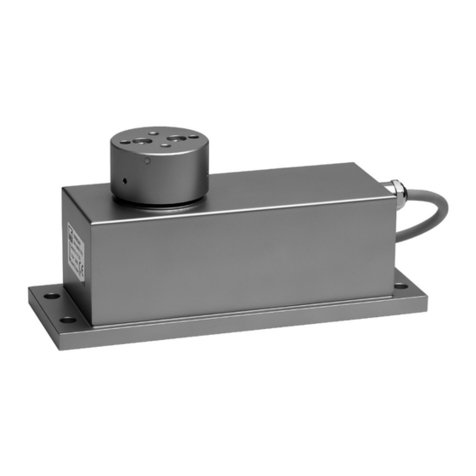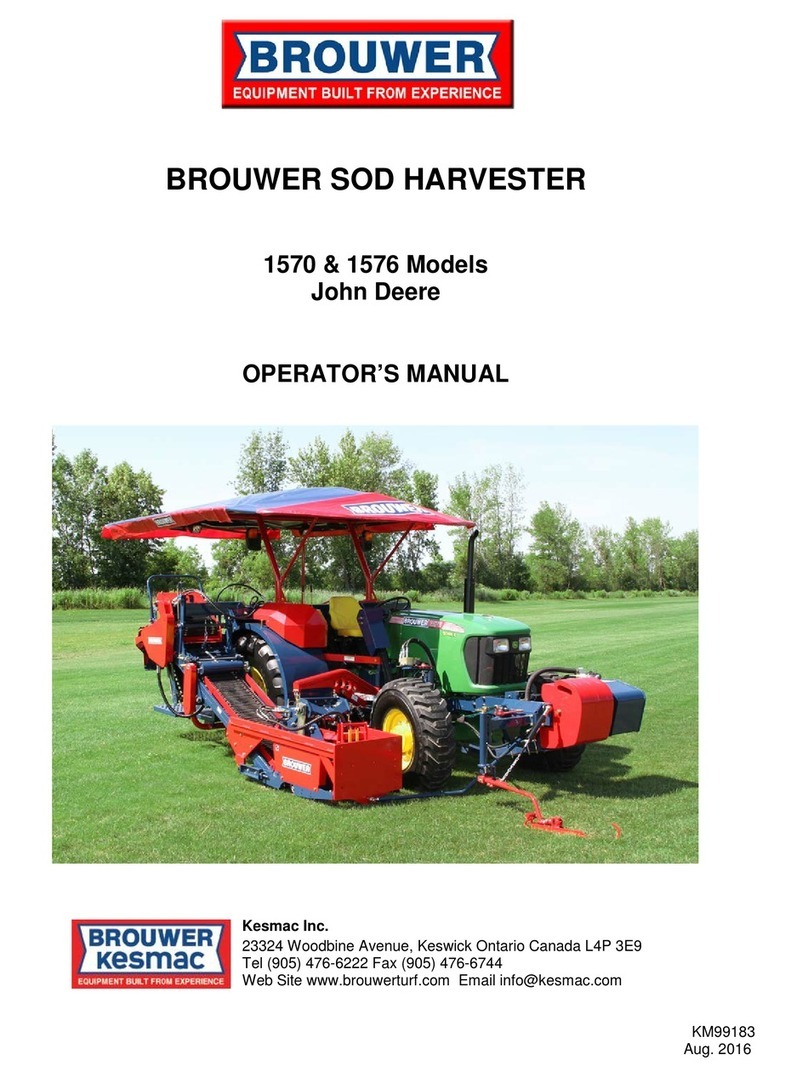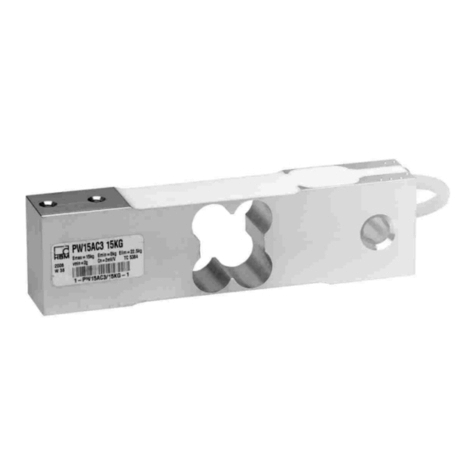entegris NOWPak User manual

ADVANCED MATERIALS HANDLING |MANUAL
NOWPak®Liner-Based Canister System
User manual

2User Manual | Entegris, Inc.
NOWPAK LINER-BASED CANISTER SYSTEM
TABLE OF CONTENTS
—
Section 1: Overview........................................................... 3
Safety Information........................................................... 3
System Information......................................................... 3
Canister System Components ..................................... 3
Handling the Canister..................................................... 3
Refurbishing and Refilling the Canister...................... 3
Additional Guides............................................................. 3
Section 2: Safety................................................................. 3
General Safety Precautions........................................... 3
Technical Support............................................................ 4
Section 3: System Information ....................................... 4
Section 4: Canister System Components .....................5
Liner-Based Canisters..................................................... 5
Replacement Liners ........................................................ 5
Retainers ............................................................................ 6
Fitment Adapters.............................................................. 6
Diptube............................................................................... 6
Replacement Breakseals.................................................7
Canister Closures..............................................................7
Two-Piece Closures ..............................................7
One-Piece Closure ............................................... 8
Chemical Dispense Connectors.................................. 8
NDCD Dispense Connectors ........................... 8
NDLD Dispense Connectors ............................ 9
NDED MaxMT™ Dispense System................... 9
Section 5: Handling the Canisters.................................. 9
Moving the Canisters.................................................... 10
Storing and Staging the Canisters............................. 10
Storing the Filled Canisters ............................... 10
Staging Filled Canisters ...................................... 10
Section 6: Refurbishing and Filling the Canisters..... 10
Empty Canister Disassembly and
Liner Removal ................................................................ 10
Inserting Two-Dimensional Replacement
Liners Into the Canister ................................................12
Inserting Three-Dimensional Conformal
Liners Into the Canister................................................ 13
Inflating a Liner Inside a Canister .............................. 15
Using a Bag Inflation Fixture (BIF ................... 15
Manual Liner Inflation Fixture ........................... 15
Canister Filling and Diptube Insertion.......................17
Capping a Filled Canister............................................. 18
Two-Piece Closures ........................................... 18
One-Piece Closures ............................................ 19
Canister Assembly Overview ......................................20
Canister Shipment .........................................................20
Section 7: Canister System Maintenance....................21
Diptube Maintenance ................................................... 21
Closure Maintenance....................................................23
Dispense Connector Maintenance ...........................24
O-Ring Handling Guidelines ............................. 25
Section 8: Using the Canister System......................... 25
End User Procedures.................................................... 25
Installing a Dispense Connector to the
Production Tool ...................................................25
Connecting the Dispense Connector to
a Canister ..............................................................26
Dispensing Chemical From the Canister ......26
Changing Out Empty Canisters ....................... 27
Troubleshooting Chemical Leaks..................... 27
Appendix A: Required Tools ..........................................28
Appendix B: Canister Compatibility Matrix................ 32
Appendix C: Ordering Guide......................................... 34

NOWPAK LINER-BASED CANISTER SYSTEM
3User Manual | Entegris, Inc.
SECTION 1: OVERVIEW
—
This user guide is intended for use by personnel who
will install, use, maintain and repair the NOWPak®
liner-based canister system. General and descriptive
information about the system is provided. Step-by-step
instructions for all user procedures and troubleshooting
information are included in this guide.
Chemical Suppliers will use the instructions in this
guide to refurbish the canisters, and for filling new
and refurbished canisters with chemicals for use by
and end users of the system.
End Users of the system will use the instructions in this
guide to install dispense connectors and canisters to
their production tools, operate the system, change out
empty canisters, and maintain the canister components.
The contents of this guide have been organized into
the following sections to assist you in locating the
information you need. Contents of the manual are
subject to change without notice.
SAFETY INFORMATION
This section provides important safety information that
must be understood and followed by anyone working
with the NOWPak liner-based canister system.
SYSTEM INFORMATION
This section provides general information about
the system.
CANISTER SYSTEM COMPONENTS
This section contains descriptions of, and usage
information for, system components.
HANDLING THE CANISTER
This section contains information about handling
and moving canisters that are filled with chemicals.
Instructions are provided for properly storing filled
canisters and staging canisters before dispensing
chemicals from them.
REFURBISHING AND REFILLING THE CANISTER
This section is for use by chemical suppliers who
fill new canisters with chemicals and who receive
empty canisters from end users for refurbishment
and refilling. Step-by-step procedures are provided
for the disassembly, cleaning, recycling, and refilling
operations performed by chemical suppliers.
ADDITIONAL GUIDES
Additional Entegris guides are available upon request
and provide descriptions and operating instructions
for the dispense connectors used in the liner-based
canister system.
SECTION 2: SAFETY
—
These safety instructions must be followed whenever
installing, removing, filling, operating, or working on
or around the NOWPak liner-based canister system.
GENERAL SAFETY PRECAUTIONS
• Follow all appropriate chemical safety regulations.
• Wear chemical splash goggles and other appropriate
Personal Protection Equipment (PPE) when handling
components containing chemicals.
• Only dispense hazardous chemicals in a highly
ventilated area to avoid exposure to hazardous
chemical vapors.
• Observe all instructions and warnings on the
NOWPak liner-based canister.
• Always dispense liquids away from the operator,
or any other person.
• Regularly inspect the dispense connector for
evidence of chemical leaks.
• If a leak is observed, stop operation, and repair
the leak.
• Use only Entegris original parts for repair
or maintenance.
• Use only Entegris recommended tools for setup,
operation, and maintenance of the liner-based
canister system.

4
NOWPAK LINER-BASED CANISTER SYSTEM
User Manual | Entegris, Inc.
• A three-way valve must be installed in the inert gas
supply line to allow for safe canister pressurization
and depressurization.
• Filled canisters must be handled using appropriate
canister handling equipment. Entegris recommends
using a four-wheel drum dolly to move 200-liter
canisters. Never roll a filled canister on the chime
edge or on its side!
WARNING: 200-liter canisters must have internal
pressure released before removing the dispense
connector. If the canister is pressurized, the
dispense connector may fly upward with great
force while being removed. Serious injury or death
may result.
WARNING: The maximum operating pressure is
101 kPa (14.7 psig) within the United States. Outside
of the United States follow local regulations, which
may require lower dispense pressure to be used.
Use a pressure relief valve to prevent over pressur-
ization of the canister. Dispense connectors with
preset pressure relief valves are available.
IMPORTANT: The maximum internal canister pressure is
196 kPa (28.4 psig) for canisters larger than 40 liters. Do not
allow the pressure inside any canister to exceed this rating.
TECHNICAL SUPPORT
For technical support, contact Entegris at
+1 800 394 4084. Please have the complete
model number, chemical, and application
information ready when calling.
SECTION 3: SYSTEM INFORMATION
—
The liner-based canister system consists of a reusable
stainless-steel outer shell and a single-use inner liner
filled with a desired chemical. The canister is available
in sizes from 4 to 200 liters and can be fitted with
a variety of dispense connector types to suit your
dispensing requirements.
In use, a dispense connector is installed on the
canister, Figure 1, and connected to the end user’s
application. The inner liner collapses as the chemical
is dispensed. When empty, the canister is ready to be
refurbished with a new, pre cleaned liner and refilled
with chemicals.
Replacement liners will safely contain the most
hazardous chemical. Liners are available in
fluoropolymer materials for highly aggressive
chemical fills, or coextruded polyethylene
materials for less aggressive applications that
require ensured purity or gas barrier protection.
Figure 1. NOWPak liner-based canister system.

NOWPAK LINER-BASED CANISTER SYSTEM
5User Manual | Entegris, Inc.
SECTION 4: CANISTER SYSTEM COMPONENTS
—
This section of the guide provides a description of the
main components used in the NOWPak liner-based
canister system.
A complete liner-based canister system, Figure 2,
consists of a filled canister with an installed
cleanroom-manufactured liner, diptube, retainer,
and closure. At the point of use, the closure cap is
removed and an Entegris chemical dispense
connector is attached to the canister for
chemical dispensing.
One-piece plastic
closure (only used on
20-liter canisters)
Aluminum
closure cap
Closure base (with
breakseal installed
inside)
Fitment adapter
(only used on
200-liter canisters)
Retainer
Overpack (stainless
steel canister)
Liner
Diptube
Figure 2. Stainless steel canister with installed components
(cutaway view).
During chemical dispense, gas pressure from the user’s
system is applied through the dispense connector to
the outside of the liner. The gas pressure squeezes the
liner, forcing chemicals up through the diptube to the
dispense connector. As the chemicals is dispensed, the
liner collapses.
Once the canister is empty, the end user sends it back
to the chemical supplier who removes the old liner,
refurbishes, and refills the canister.
NOTE: See Appendix A: Required Tools, page 28, for
descriptions and item numbers of specialized tools
needed to handle canister system components and
to refurbish empty canisters.
NOTE: See Appendix B: Canister Compatibility Matrix, page
32, for item numbers and descriptions of canister compo-
nents, replacement parts, and for additional accessories
that can be purchased for use with the canister system.
LINER-BASED CANISTERS
The stainless-steel canisters are available in the
following sizes:
• 4-liters
• 10-liters
• 18-liters
• 19-liters
• 20-liters
• 40-liters
• 200-liters
NOTE: See Appendix B: Canister Compatibility Matrix,
page 32, for canister model numbers and item numbers
of the components to be used with each canister.
NOTE: Each canister size requires the use of a specific liner,
diptube, and closure. All 4- to 40-liter canisters have a 2.5”
diameter neck opening and 200-liter canisters have a 4.75”
diameter neck opening. Some canister sizes have dierent
thread sizes than others. Be sure to use the correct
components for each canister size and type.
REPLACEMENT LINERS
The chemical inside the canister is contained within
a pre cleaned, single-use, collapsible liner, Figure 3,
which the chemical supplier installs and inflates inside
the canister. The liner is sealed in the canister using a
retainer and a closure.
Dierent liner materials are available for a wide range
of chemicals and are available as particle certified.
Particle certified liners are manufactured and packaged
within a Class 5 cleanroom as per International Standard
ISO 14644-1:1999 cleanrooms and associated controlled
environments – Part 1: classification of air cleanliness.
A certificate of analysis stating lot specific particle count
data can be obtained from a web-based database.
Replacement liners for 200-liter canisters include the
fitment adapter needed to reduce the fitment opening
for diptube insertion. Each liner is pre folded and
sealed within a plastic sleeve along with a retainer.
The liners, retainers, and fitment adapters (200-liter
only) are packaged in equal quantities.

6
NOWPAK LINER-BASED CANISTER SYSTEM
User Manual | Entegris, Inc.
Please contact Entegris for application-specific
information and liner compatibility.
Red temporary cap
4- to 40-liter liner
Retainer
200-liter liner
Figure 3. Replacement liners.
RETAINERS
The liner is inserted into a canister and held in place
with a retainer, Figure 4. The two halves of the retainer
close around the liner fitment, preventing the fitment
from falling inside the canister. There are two dierent
retainers: one for use with 4- to 40-liter canisters, and
one for use with 200-liter canisters.
The appropriately sized retainer is packaged with each
replacement liner. For 4- to 40-liter size liners, one
retainer is included for each liner, and for 200-liter
size liners, one retainer plus one fitment adapter is
included for each liner.
Retainer for 4- to 40-liter liners
Retainer for 200-liter liner
Figure 4. Retainers (one packaged with each replacement liner).
FITMENT ADAPTERS
200-liter canisters require a fitment adapter, Figure 5,
to be inserted inside the retainer. The fitment adapter
reduces the larger 200-liter fitment opening to the
size needed for diptube insertion. The 4- to 40-liter
canisters do not use a fitment adapter.
One fitment adapter is packaged with each 200-liter
replacement liner.
Red temporary cap
Figure 5. Fitment adapter.
DIPTUBE
Before sealing a filled canister, the chemical supplier
inserts the diptube, Figure 6, into the canister. Diptubes
for the liner-based canister system are available
with dierent downtube lengths, and each diptube
corresponds with a specific canister size.
At the end user site, the dispense connector is
installed and chemical is forced up through the
diptube and dispensed through the dispense
connector to the end user’s production tool.
NOTE: See Appendix B: Canister Compatibility Matrix,
page 32, for information about the correct diptube to
use with each canister and for optional O-ring materials.
O-ring Coupler Downtube
Figure 6. Diptube.

NOWPAK LINER-BASED CANISTER SYSTEM
7User Manual | Entegris, Inc.
REPLACEMENT BREAKSEALS
Breakseal technology, Figure 7, separates the chemical
from the environment to ensure absolute chemical
integrity during transport of filled canisters. When the
dispense connector is inserted into a canister at the
end user’s site, it punctures the breakseal and allows
access to the chemical stored inside the liner.
Breakseals are single-use only. Each time a chemical
supplier refurbishes a canister, a new breakseal is
inserted into the closure base before capping the
filled canister.
NOTE: All liner-based canister system canisters use a
breakseal, except the 63 mm neck thread type canisters
using the one-piece closure (item part number NC-W2).
These require an ND-LD or ND-HR dispense connector to be
attached directly to the canister after the closure has been
removed. See ND-LD Dispense Connectors on page 9.
This side faces upward
when installed in
the canister.
This side faces downward
in the canister and is
wetted by chemical.
NA-49 standard breakseal
NA-09 standard breakseal
Figure 7. Replacement NA-09 and NA-49 standard breakseals shown.
CANISTER CLOSURES
The chemical supplier uses a closure to seal the canister
after filling it with chemicals. At the end user’s site,
the closure cap is removed by hand and a dispense
connector is installed for drawing chemical from
the canister.
Canister closures are either two-piece assemblies or
one-piece.
Two-Piece Closures
Most canisters are sealed using a two-piece closure,
Figure 8. The closure base is torqued into place onto
the canister, and the closure cap is hand-tightened
onto the base.
The following two-piece closures are available for use
on liner-based canister system canisters, Figure 8:
• NC-03: anodized aluminum, 4- to 40-liter canisters,
2.5-12 UN neck thread, EPDM with PTFE coated
O-ring
• NC-03-2: anodized aluminum, 4- to 40-liter
canisters, 2.5-12 UN neck thread, FEP-encapsulated
O-ring
• NC-04: anodized aluminum, 4- to 40-liter canis-
ters, 63 mm buttress neck thread, EPDM with PTFE
coated O-ring
• NC-04-2: anodized aluminum, 4- to 40-liter canis-
ters, 63 mm buttress neck thread, FEP-encapsu-
lated O-ring
• NC-200-2: anodized aluminum, 200-liter canisters,
4.75-4 buttress neck thread, FEP-encapsulated
bottom O-ring
• NC-200-4: anodized aluminum, 200-liter canisters,
4.75-4 buttress neck thread, EPDM with PTFE
coated bottom O-ring
Each two-piece closure includes a closure base that
contains a compression ring and O-ring, and a closure
cap that contains another O-ring. See Appendix B:
Canister Compatibility Matrix, page 32, for information
on the thread specifications for each type of closure
base and cap.
Cap Closure base
NC-03/NC-04
NC-200-2/NC-200-4
Figure 8. Two-piece anodized aluminum closures.

8
NOWPAK LINER-BASED CANISTER SYSTEM
User Manual | Entegris, Inc.
One-Piece Closure
The 63 mm neck thread canister type can use the
one-piece closure, Figure 9, and then only when an
ND-LD dispense connector is used. The 63 mm neck
thread canister type allows the one-piece closure to be
installed directly onto the canister.
At the end user’s site, the one-piece closure is
removed, and the ND-LD dispense connector is
installed directly onto the canister neck. No breakseal
is used in this arrangement. See ND-LD Dispense
Connectors page 9.
NOTE: The 63 mm neck thread canister type can also use
an NC-04 two-piece closure when an ND-CD dispense
connector is used.
Figure 9. NC-W2 one-piece plastic closure.
CHEMICAL DISPENSE CONNECTORS
Three dierent types of chemical dispense connectors
are available to meet specific dispense conditions.
Refer to the NOWPak liner-based canister system data
sheet or contact Entegris for application-specific
information, options, and model numbers:
• ND-CD
• ND-LD
• ND-ED (MaxMT™system)
Refer to the relevant Entegris user guide or data sheet
for specifications and for detailed user and maintenance
instructions for each type of dispense connector.
ND-CD Dispense Connectors
The ND-CD series pressure dispense connector,
Figure 10, provides a clean, convenient, and completely
sealed method for dispensing chemicals from
liner-based canister system containers. ND-CD
dispense connectors have all fluoropolymer wetted
surfaces and require the use of a two-piece closure.
(When installed on a canister, the dispense connector
threads onto the closure base.)
ND-CD dispense connectors can be used with any
size canister (4- to 200-liters), however, some ND-CD
models have longer threaded collars, and other
models have shorter threaded collars. Collar length
aects which dispense connectors are accepted by
each canister. See Appendix B: Canister Compatibility
Matrix, page 32, for information on matching ND-CD
dispense connectors with appropriate canisters
and components.
See the ND-CD Connector Series Operating and
Maintenance Procedures Guide for detailed user
information on these dispense connectors.
ND-CD-SA Type (Slotted)
Slot in the upper connector body
for the tubing to pass through.
ND-CD-SB Type (Strain Relief)
Holes in the upper connector body
for the tubing to pass through. These
holes prevent the fitting from being
turned by the tubing.

NOWPAK LINER-BASED CANISTER SYSTEM
9User Manual | Entegris, Inc.
ND-CD-XC Type
Optional pressure relief valve
Liquid outlet fitting
Gas inlet fitting
Figure 10. ND-CD dispense connectors.
ND-LD Dispense Connectors
The one-piece ND-LD dispense connectors, Figure 11,
are available for use only with 20-liter canisters. The
ND-LD dispense connector has a dierent thread size
and a built-in diptube and is used only on canisters that
have been sealed with the one-piece plastic closure.
See Appendix B: Canister Compatibility Matrix, page 32,
for information on matching ND-LD dispense connectors
with appropriate Liner-based canisters and components.
The ND-LD series connectors have an FEP/PFA/PTFE
fluid path. The diptube can be removed easily and
changed, if necessary. A nitrogen or helium source
is necessary to pressurize in between the liner and
overpack to dispense chemical from the canister.
At the end user’s site, the one-piece closure (NC-W2)
is removed from the canister, exposing the chemical.
The ND-LD dispense connector is then connected
directly to the canister neck threads with no breakseal
being used.
Refer to the ND-LD data sheets or contact Entegris
for model numbers and detailed user information
on these dispense connectors.
Figure 11. ND-LD dispense connector.
ND-ED MaxMT Dispense System
The MaxMT dispense system connectors, Figure 12,
combine pressure dispense and integrated empty
detection to maximize chemical utilization. The MaxMT
system uses dispense pressure to detect when one
canister is empty and automatically switches dispense
to the second canister.
MaxMT dispense system connectors are used with
10- to 40-liter liner-based canisters. See Appendix B:
Canister Compatibility Matrix, page 32, for more
information. A complete MaxMT system comprises two
MaxMT system connectors and a control box used with
liner-based canisters, diptubes, closures, and liners.
Refer to the MaxMT system, data sheets or contact
Entegris for model numbers and detailed user
information on these dispense connectors.
MaxMT dispense
connectors
MaxMT
control box
Figure 12. ND-ED MaxMT dispense connectors (installed on 19-liter
canisters) and control box.
SECTION 5: HANDLING THE CANISTERS
—
Use the information in this section of the guide for
handling, storing, and staging liner-based canister
system canisters. Chemical suppliers and end users
must follow proper procedures for handling and
moving canisters.

10
NOWPAK LINER-BASED CANISTER SYSTEM
User Manual | Entegris, Inc.
MOVING THE CANISTERS
Due to the size and volume of the 40- to 200-liter
canister, it is recommended that a four-wheel drum
dolly be used to move the filled containers. Other
methods may be suitable but should be tested on a
container filled with water before being used on a
canister that contains chemical.
WARNING: Never roll a filled canister on the
chime edge or on its side! Canisters must not be
dropped. These actions could cause the canister
to crack or suer other structural failure.
WARNING: Larger canisters, such as 40- to 200-liter,
are very heavy and should only be moved by
trained personnel using properly rated moving
equipment. Improperly lifting or moving canisters
can cause damage, including breakage of the
canister or serious injury.
WARNING: Under no circumstances should
a filled canister be transported without the
mechanical aids described above.
STORING AND STAGING THE CANISTERS
Canisters filled with chemical must be stored under
proper conditions, as determined by the type of
chemicals involved. At the end use site, filled
canisters must be staged before being used to
dispense chemical, as required by the type and
amount of chemical used.
Storing Filled Canisters
Storage conditions vary by chemical contained in the
canister. Contact the chemical supplier for appropriate
storage for each chemical.
Staging Filled Canisters
The time required for the chemical in a canister to reach
thermal equilibrium is determined by the properties of
the contained chemical and the staging conditions.
Please contact the chemical supplier for appropriate
staging times for each chemical.
SECTION 6: REFURBISHING AND FILLING THE CANISTERS
—
The procedures in this section of the guide are
performed by chemical suppliers when an empty
canister is received from an end user and when
filling a refurbished or new liner-based canister.
Refurbishing and filling a liner-based canister consists
of the following procedures:
• Empty canister disassembly and liner removal
• Inserting a liner into the canister
• Inflating a liner using a bag inflation fixture (BIF)
• Inflating a liner using a manual inflation fixture
• Filling a canister with chemical and inserting
the diptube
• Capping the canister
• Shipping the canister
IMPORTANT: The chemical supplier must ensure the
correct components are used for each canister refurbished.
See Appendix B: Canister Compatibility Matrix, page 32,
to find the liners, diptubes, adapters, and closures to
be used with each canister.
EMPTY CANISTER DISASSEMBLY AND LINER REMOVAL
Use this procedure to remove the diptube and liner
from an empty canister and dispose of the liner
properly. This is typically the first process performed
on a canister that has been received for refurbishing.
Items needed:
• Liner disposal plug: part number NA-07
(for 40- to 200-liter canisters); part number
DA-03 (for 200-liter canister).
• Appropriate handling supplies for the used liner
and diptube. Some chemical will remain on these
when they are removed from the canister. Entegris
recommends placing the used diptube into a
sealable bag.

NOWPAK LINER-BASED CANISTER SYSTEM
11User Manual | Entegris, Inc.
WARNING: Some chemical may remain on
component parts. Follow all chemical safety
procedures and wear chemical splash goggles
and other appropriate PPE.
1. Remove the entire closure assembly using the
appropriate torque adapter tool and torque
wrench, Figure 14.
Inspect and clean the closure and replace the
breakseal before using the closure again. See
Closure Maintenance on page 23.
Torque wrench
Torque adapter
tool
Figure 14. Removing the closure (19-liter canister shown).
2. Remove the diptube using one of the diptube
removal tools (part number NA-13), Figure 15.
3. This step does not apply to a 20-liter canister with
NC-W2 closure. In this configuration, the diptube
was removed by the end user along with the
dispense connector.
If using the NA-13 tool, insert the tool into
the coupler and tilt at an angle to the side.
Lift straight up to extract the diptube from
the retainer.
Figure 15. NA-13 diptube removal tool.
4. (200-liter canister only) Remove the fitment adapter
from inside the canister neck, Figure 4, page 6. Use
either of these methods:
Manual: Pull up on the edges of the adapter to
disengage the O-ring or use the liner removal tool.
Liner removal tool (part number DA-04): Place the
bottom opening of the tool over the top of the
adapter and turn clockwise until it stops. While
holding the liner with one hand, pull up on the
liner removal tool with the other hand until the
O-ring is disengaged from the liner fitment.
5. Drain any residual chemical from the canister
before removing the liner from the canister.
6. Remove the liner from the canister. The liner
should be fully collapsed before performing this
step, Figure 16.
Place the liner removal tool over the top of
the fitment.
Rotate the liner removal tool 90° until it stops.
With one hand, pull up on the liner removal tool
while the other hand guides the liner out of the
canister. Use a gentle, side-to-side motion to
prevent tearing of the liner during removal.
When the liner is completely removed from the
canister, disconnect the liner removal tool from
the retainer.
Install the appropriate liner disposal plug (part
number NA-07 for 4- to 40-liter canisters) in
the liner fitment. Make sure the disposal plug
is firmly seated.
Consolidate used liners, then dispose of the liners
in an appropriate manner based on the chemical
in the liner.
WARNING: Used liners may contain small amounts
of chemical vapor. Proper ventilation and safety
equipment are required for liner removal. Dispose
of used liners in accordance with local laws and
regulations for contaminated waste.
IMPORTANT: If the liner tears during removal, and
chemical spills inside the canister, the canister
interior must be thoroughly cleaned before being
recycled or reused.

12
NOWPAK LINER-BASED CANISTER SYSTEM
User Manual | Entegris, Inc.
Liner removal
tool
Figure 16. Removing the used liner.
NOTE: If the reusable diptube is inside the liner, cut the
liner and remove the diptube. The diptube can now be
inspected and cleaned for reuse, see Diptube Maintenance
on page 21.
7. Inspect the canister carefully before reusing it,
following your internal procedures. It is the
chemical supplier’s responsibility to ensure that
the canister is not damaged and is suitable for
use before filling with chemical.
NOTE: Cleaning the canister interior is not required
unless the liner integrity has been compromised.
Entegris does not prescribe cleaning procedures for
reusable components, and cleaning procedures depend
on the specific chemical properties of the chemical in
question. However, deionized water/isopropyl alcohol
mixtures are commonly used for cleaning, which is
generally followed by a deionized water rinse.
INSERTING TWO-DIMENSIONAL REPLACEMENT LINERS
INTO THE CANISTER
Use this procedure to insert a replacement liner into
a canister before inflating and filling with chemical.
Tools required, (see Required Tools on page 28):
Liner insertion tool, part number NA-60
(4- to 40-liter canisters); part number NA-60-200
(for 200-liter canisters).
Items needed: New pre folded liner with included
retainer (for all liners) and fitment adapter
(for 200-liter only).
IMPORTANT: Each liner is pre folded to ensure proper
inflation when an automatic or manual inflation fixture is
used. The folds are designed to open in a determined order,
allowing the liner to conform to the interior of the canister
and attain maximum volume. Do not unfold the liner before
inserting it into the canister.
1. Select a new, properly sized, pre folded liner.
NOTE: See Appendix B: Canister Compatibility Matrix,
page 32, to find the liners that may be used with each
canister.
2. Place the correct liner insertion tool into the
canister neck, Figure 17. The liner insertion tool is
used to prevent damage to the replacement liner
as it is inserted into the canister through the neck
opening. This insertion tool protects the liner from
any burrs or defects inside the canister neck.
Liner insertion
tool
Figure 17. Liner insertion tool inserted in canister neck (NA-60 shown).
3. Remove the new liner from the cleanroom packaging.
Do not unfold the liner. The folds in the liner are
specifically designed to enable proper inflation of
the liner. The folds create a small amount of back
pressure which allows the bag to form to the upper
and lower portions of the canister equally.
For 40-liter and 200-liter liners the bottom of the
liner is folded up. Remove this fold prior to inserting
into canister. Be careful to prevent damaging the
liner while handling it.
4. Insert the liner into the canister until about ⁄ of the
liner remains outside the canister, Figure 18.
Figure 18. Liner being inserted into canister (observe liner folds).

NOWPAK LINER-BASED CANISTER SYSTEM
13User Manual | Entegris, Inc.
NOTE: Be sure the liner is not rotated or becomes twisted
as it is inserted into the canister. Those conditions can
result in improper inflation.
5. Grasp the liner layers in the front and back of the
liner and pull gently to separate the layers. This
creates an open path for the gas to flow through
during the initial stage of inflation, Figure 19.
Figure 19. Separating the liner layers.
6. Tuck the top corners of the liner into the canister
with the liner insertion tool still residing in the neck
of the canister, Figure 20.
Figure 20. Tucking in the liner layers.
7. Remove the liner insertion tool while holding on to
the top of the fitment.
NOTE: Do not allow the liner fitment to drop through the
neck of the canister.
8. Place the retainer (packaged with the liner) around
the fitment. Be sure to examine the base of the
fitment and remove and portion of the liner that
may be hooked on the upper fitment, Figure 21.
All liner material should be below the base of
the fitment.
Retainer
Liner fitment
Figure 21. Placing the retainer around the fitment (200-liter canister shown).
9. Seat the fitment and retainer into the neck of the
canister, Figure 22.
Figure 22. Seating the fitment and retainer into the canister.
10. The canister is now ready for inflation.
INSERTING THREE-DIMENSIONAL CONFORMAL LINERS
INTO THE CANISTER
Use this procedure to insert a replacement liner into
a canister before inflating and filling with chemical.
Tools required, (see Required Tools on page 28):
Liner insertion tool, part number NA-60 (for 19 - to
40-liter canisters); part number NA-60-200
(for 200-liter canisters).
Items needed: New pre folded liner with included
retainer (for all liners) and fitment adapter
(for 200-liter canisters only).
IMPORTANT: Each liner is pre folded to ensure proper
inflation when an automatic or manual inflation fixture is
used. The folds are designed to open in a determined order,
allowing the liner to conform to the interior of the canister
and attain maximum volume. Do not unfold the liner before
inserting it into the canister.

14
NOWPAK LINER-BASED CANISTER SYSTEM
User Manual | Entegris, Inc.
1. Select a new, properly sized, pre folded liner.
NOTE: See Appendix B: Canister Compatibility Matrix,
page 32, to find the liners that may be used with each
canister.
2. Place the correct liner insertion tool into the canister
neck, Figure 23. The liner insertion tool is used to
prevent damage to the replacement liner as it is
inserted into the canister through the neck opening.
This insertion tool protects the liner from any burrs
or defects inside the canister neck.
Liner insertion
tool
Figure 23. Liner insertion tool inserted in canister neck (NA-60 shown).
3. Remove the new liner from the cleanroom packaging.
Do not fully unfold the liner. The folds in the liner are
specifically designed to enable proper inflation of the
liner. The folds create a small amount of back pressure
which allows the bag to form to the upper and lower
portions of the canister equally.
Be careful to prevent damaging the liner while
handling it.
For 40-liter and 200-liter liners the bottom of the
liner is folded up. Remove this fold prior to inserting
into canister.
4. Insert the liner into the canister until the fitment
remains outside the canister, Figure 24.
Figure 24. Liner being inserted into canister (observe liner folds).
NOTE: Be sure the liner is not rotated or becomes twisted
as it is inserted into the canister. Those conditions can
result in improper inflation.
5. Remove the liner insertion tool while holding on to
the top of the fitment.
NOTE: Do not allow the liner fitment to drop through
the neck of the canister.
6. Place the retainer (packaged with the liner) around
the fitment. Be sure to examine the base of the
fitment and remove any portion of the liner that
may be hooked on the upper fitment, Figure 25.
All liner material should be below the base of
the fitment.
Retainer
Liner fitment
Figure 25. Placing the retainer around the fitment (200-liter canister shown).
7. Seat the fitment and retainer into the neck of the
canister, Figure 26.
Figure 26. Seating the fitment and retainer into the canister.
8. The canister is now ready for inflation.

NOWPAK LINER-BASED CANISTER SYSTEM
15User Manual | Entegris, Inc.
INFLATING A LINER INSIDE A CANISTER
After inserting a liner into a canister, the chemical supplier
inflates the liner prior to chemical filling. Proper inflation
ensures maximum volume of the system.
Liners may be inflated using either a bag inflation fixture
(BIF) or a manual inflation fixture. A BIF provides fast
and automated inflation and is generally used for high
volume customers. Manual inflation takes longer but is
suitable when fewer canisters are being refurbished.
Using a Bag Inflation Fixture (BIF)
The BIF is used to inflate a liner inside a canister,
Figure 27. Chemical suppliers typically use a BIF when
they frequently refurbish canisters because the BIF
provides fast and automatic inflation. Low volume
operations may choose to use a manual inflation
fixture instead.
Air cylinder
Extending air fitting
Control panel
Canister platform
Booster locating plate accessory.
(For 4-liter canister only. Place
on the canister platform to adjust
canister height for inflation.)
Figure 27. Bag inflation fixture (NF-01-FR shown).
NOTE: The use of bag inflation fixtures not manufactured
by or approved by Entegris may cause inflation problems.
Entegris is not responsible for inflation problems that result
from the use of an unapproved bag inflation fixture.
Tools Required (see Required Tools, page 28)
PART NUMBER
Tool
4- to 20-liter
canister
40-liter
canister
200-liter
canister
Automated bag
inflation fixture
(BIF
NF-01-FR NF-40-FR NF-180/
200-FR
Booster locating
plate (for 4-liter
only)
NA-107
Locating plate
(for 10- and
18-liter only)
NA-135
NOTE: See the appropriate Entegris bag insertion fixture
User Guide for detailed instructions on using the bag
inflation fixture.
To use a BIF, first set up the BIF as described in the
appropriate User Guide. Place the canister with installed
liner on the canister platform and initiate the auto-
matic inflation process. The air cylinder will extend the
air fitting over the canister neck and inflate the liner.
When inflation is complete, a green PASS light will
glow. The fixture will automatically exhaust the
canister pressure and the air cylinder will retract.
The liner is now inflated, and the canister may be
filled with chemical.
Manual Liner Inflation Fixture
Follow this procedure to use a manual inflation fixture
to inflate a liner that has been installed in a canister.
This procedure requires the user to manually control
the flow of inflation gas into the liner and monitor the
inflation process.
Tools Required (see Required Tools, page 28)
Tool
Canister neck
thread type
Item
number
Manual Inflation
Fixture
2.5-12 UN thread NA-41-8990
Modified buttress
63 mm thread
NA-41
Buttress 4.75-4
thread (200-liter)
NA-41-200-2

16
NOWPAK LINER-BASED CANISTER SYSTEM
User Manual | Entegris, Inc.
NF-01-FR NF-40-FR NF-180/200-FR
Canister size 4-, 10-, 18-, 19-, 20-liter 40-liter 200-liter
Liner type All All All
Fill timer (no units) 3.5 3.5 3.5
Test timer (no units) 111
Exhaust timer (no units) 2.5 2.5 3.25
N2switch 62.0 ±1.7 kPa
(9.00 ±0.25 psig)
62.0 ±1.7 kPa
(9.00 ±0.25 psig)
62.0 ±1.7 kPa
(9.00 ±0.25 psig)
N2regulator 82.7 ±6.9 kPa
(12.00 ±1.00 psig)
82.7 ±6.9 kPa
(12.00 ±1.00 psig)
165.5 ±6.9 kPa
(24.00 ±1.00 psig)
CDA regulator 276 483 kPa (40 70 psig) 276 483 kPa (40 70 psig) 345 483 kPa (50 70 psig)
Flow rate at fill head ≥75 L/min ≥170 L/min ≥270 L/min
Equipment cycle
time (reference):
fill test exhaust
4-liter 15 20 sec
10-liter 20 25 sec
18-, 19-, 20-liter 30 35 sec
60 sec 120 sec
No load set up
reading (reference):
N2regulator gauge
35 55 kPa (5 8 psig) 35 55 kPa (5 8 psig) 35 55 kPa (5 8 psig)
No load set up
reading (reference):
control panel gauge
14 21 kPa (2 3 psig) N/A N/A
Table 1
1. Connect the proper manual inflation fixture to a
filtered and regulated nitrogen source, Figure 28.
2. Verify the three-way valve is closed.
3. Set the pressure regulator inlet to 586 kPa (85 psig).
4. Set the pressure regulator outlet to the desired
outlet pressure, Table 1, and allow the system to
stabilize. The exact set point may vary depending
on source pressure, line size and length.
NOTE: Outlet pressure from the regulator must be at
least 6 kPa (9 psig). Increasing the outlet pressure causes
the liner to inflate more quickly; however, increasing the
pressure beyond the recommended setting, Table 1,
may damage the liner during inflation and should be
avoided.
PET tubing
(see table for required diameter)
4 m (13 ft.) max. length
Manual inflation
fixture
N2
source
Inlet Outlet
Pressure
regulator
Cv = 1.0
3-way
valve
Figure 28. Connecting the manual inflation fixture (typical setup).
NOTE: Ensure a filter is installed on the gas pressure
source to prevent contamination of the liner.
The use of any manual inflation fixture not
manufactured by or approved by Entegris may
cause inflation problems that result from the
use of an unapproved manual inflation fixture.

NOWPAK LINER-BASED CANISTER SYSTEM
17User Manual | Entegris, Inc.
5. (200-liter canister only.) Place a fitment adapter into
the 2 inch liner fitment, Figure 29.
6. Connect the manual inflation fixture to a canister
with a properly inserted liner by threading clockwise
until firm resistance is felt.
Figure 29. Fitment adapter.
7. Open the three-way valve to begin the flow of
nitrogen into the liner.
8. Monitor the pressure reading on the regulator to
verify that the pressure drops below 62 kPa (9 psig).
If the pressure does not drop below 62 kPa (9 psig),
the inflation process should be stopped, and the
regulator setting should be reduced prior to
inflating liners.
9. Close the three-way valve when the pressure rises
back up to 62 kPa (9 psig) on the pressure regulator.
This stops the inflation with an internal pressure of
62 kPa (9 psig).
10. Allow the system to stabilize for 20 seconds. During
this time the regulator pressure will move up to the
original set point. This time is required to allow the
liner to properly form to the interior of the canister.
11. Release pressure to the canister by switching the
three-way valve to the vent position.
12. Remove the manual inflation fixture from the canister
and remove the fitment adapter (200-liter only).
Inspect the canister interior for visible obstructions
through the fill opening. If no obstructions are noted,
remove the fitment adapter (when used) and replace
the red temporary cap on the fitment or seal with a
suitable closure.
13. The canister is now ready to be filled with chemical.
If an obstruction is noted, the liner may be re-inflated
a second time as described above. If obstructions
persist, the liner should be removed and replaced.
NOTE: Removing a previously inflated liner from the
canister may damage the liner and may compromise
its performance.
NOTE: If the canister is not going to be filled
immediately, secure the red temporary cap to
the canister to prevent contamination.
If the liner does not inflate properly, check the
following troubleshooting tips:
SYMPTOM CAUSE
CORRECTIVE
ACTION
No flow or
restricted flow
of nitrogen
or CDA
Regulator
improperly
installed or
damaged
Verify regulator
and filter
plumbing.
Total inflation
time is too long
Nitrogen
pressure
too low
Check the
inlet regulator
pressure setting.
Make sure the
tubing is large
enough and is
not too long.
CANISTER FILLING AND DIPTUBE INSERTION
Chemical suppliers use this procedure to fill a canister
with the desired chemical, after the liner has been
inserted and inflated.
1. Remove the red temporary cap or closure assembly
from the canister, if present.
2. Fill the liner with the desired chemical in accordance
with internal operating procedures and regulations.
See Appendix B: Canister Compatibility Matrix, page
32, for fill capacity information.
NOTE: Do not attempt to fill chemical through the
diptube. Insert the diptube after filling the canister, as
described below.
3. (200-liter canister only) Upon completion of
chemical filling, remove the red protective cap
from the proper fitment adapter. Insert the adapter
into the fitment and press firmly to ensure the
adapter is fully seated in the fitment. The fitment
adapter, Figure 29, is used on all 200-liter canisters
to reduce the fitment opening to the size required
for diptube insertion.

18
NOWPAK LINER-BASED CANISTER SYSTEM
User Manual | Entegris, Inc.
4. Insert a pre cleaned diptube through the center of
the fitment or adapter. Leave the diptube resting
loosely in the fitment or adapter. Do not press the
diptube down into the liner fitment. A seal of the
diptube to the fitment is not required, nor desired,
for pressure equalization purposes.
WARNING: Pressing the diptube into the liner
fitment creates a safety hazard.
NOTE: New diptube assemblies from Entegris are
pre cleaned and ready for use. No further cleaning
is required prior to the initial use.
5. The filled canister is ready to be capped, Figure 30.
Figure 30. Installed diptube.
CAPPING A FILLED CANISTER
After filling a canister, the chemical supplier uses
a closure to cap the canister and make it ready for
shipping. Most canisters use a two-piece aluminum
closure with breakseal. Only the 20-liter canister uses
the one-piece closure, and only when used with an
ND-LD dispense connector. Follow the appropriate
procedure, below.
IMPORTANT: It is the chemical supplier’s responsibility
to use the correct closure for the canister being capped.
Do not overtighten. If the closure or canister threads
are damaged or cross-threaded, liquid dispense may be
aected. See page 19 for recommended torque values.
Two-Piece Closures
Use this procedure to cap a filled canister with a
two-piece closure.
Tools Required (see Required Tools, page 28)
PART NUMBER
Tool
4- to 40-liter
canister
200-liter
canister
Torque wrench NA-18 NA-92
Torque
adapter tool
NA-10 DA-06
Breakseal
insertion tool
NA-23 NA-23
Items needed:
One breakseal for each two-piece closure. See
Two-Piece Closure Replacement Parts, page 23,
for ordering information.
1. Inspect the closure, Figure 31, to ensure that both
pieces are clean and that no parts are worn out or
damaged. See Closure Maintenance on page 23
for cleaning and replacement procedures.
a. Verify the compression ring is in place in the
closure base.
b. Verify that the appropriate O-rings are in place
to ensure a proper seal.
c. Verify that the cap O-ring is not excessively worn.
NOTE: New closure assemblies purchased from Entegris
can be used “as is” due to cleanroom manufacturing.
No further cleaning is required prior to use.
Cap (O-ring installed from below)
Breakseal
Closure base
Compression ring
Closure seal O-ring
Figure 31. Two-piece closure (4- to 40-liter closure shown).

NOWPAK LINER-BASED CANISTER SYSTEM
19User Manual | Entegris, Inc.
2. Install a new breakseal into the closure base,
Figure 32.
a. Place the closure base upside down on an
appropriate work surface.
b. Insert a new breakseal into the closure base,
gasket side down.
c. Press the breakseal into place using the breakseal
insertion tool (NA-23).
Breakseal
insertion tool
(NA-23)
Figure 32. Installing a breakseal.
NOTE: The breakseal membranes have been critically
cleaned and should not be exposed to an uncontrolled
environment. To maintain cleanliness all assembly operations
must be performed within a cleanroom environment.
3. Assemble the closure cap onto the base.
4. Place the assembled closure onto the canister neck.
Torque the closure clockwise onto the canister to
the specified value using the appropriate torque
wrench and adapter, Figure 33.
Closure number Closure base torque
NC-03/NC-03-2
NC-04/NC-04-2
27 – 34 N•m (20 – 25 ft•lbs)
NC-W2 9.0 – 9.6 N•m (80 – 85 in•lbs)
NC-200-2/NC-200-4 47 – 54 N•m (35 – 40 ft•lbs)
NOTE: If proper torque is not applied, the closure
base could come loose when the dispense connector
is removed, causing serious damage to the dispense
connector.
5. Hand tighten the closure cap. There is no need
to torque the cap.
6. The canister is now ready to ship.
IMPORTANT: Ensure the closure cap is tight before
shipping a canister filled with chemical. Do not drop
filled canister or place filled canisters on their side. Both
actions can cause damage to the liners and the breakseal.
Figure 33. Installing and tightening the two-piece closure.
One-Piece Closures
Use this procedure to cap a filled canister with a
one-piece closure. The one-piece closures (NC-W1
and NC-W2) are used when an ND-LD dispense
connector is used to dispense chemical from
the canister.
NOTE: 20-liter canisters can also be capped with a
two-piece closure when an ND-CD or MaxMT dispense
connector will be used with the canister. See Two-Piece
Closures, page 7.
Tools Required for Torquing the NC-W2 Closure
Tool Part number
Torque wrench NA-33
Torque adapter tool NA-03
1. Inspect the closure, Figure 34, to ensure it is clean and
not worn out or damaged. See Closure Maintenance,
page 23, for cleaning and replacement procedures.
Figure 34. One-piece polypropylene closure (NC-W2).

20
NOWPAK LINER-BASED CANISTER SYSTEM
User Manual | Entegris, Inc.
2. Place the closure directly onto the canister neck.
Torque the closure clockwise onto the canister to
the specified value using the appropriate torque
wrench and adapter.
Closure Canister size Closure base torque
NC-W2 20-liter 9.0-9.6 N•m (80-85 in•lbs)
3. The canister is now ready to ship.
CANISTER ASSEMBLY OVERVIEW
The following illustrations show the diptube and
closure components used to cap a liner-based
canister that is filled with chemical:
• 19-liter canister with NC-03 closure, Figure 35
• 20-liter canister with NC-W2 closure, Figure 36
• 200-liter canister with NC-200-2 closure and
standard fitment adapter, Figure 37
Figure 35. 19-liter with NC-03 closure.
Figure 36. 20-liter with NC-W2 closure.
Figure 37. 200-liter with NC-200-2 closure and fitment adapter.
CANISTER SHIPMENT
Use this information to prepare a set of filled and
capped canisters for shipment to a customer.
WARNING: 200-liter canisters are very heavy
and should only be moved by trained personnel
using proper equipment. See Moving the
Canisters, page 10, for instructions and
mandatory safety procedures.
NOTE: Ensure the cap on the top of the closure is tight
before shipping a canister filled with chemical. Do not drop
filled canisters or place filled canisters on their side. Both
actions can cause damage to the liners and the breakseals.
1. Palletize canisters with closures up.
2. Do not ship canisters lying on side.
3. Use slip-sheet between layers.
4. Stacking two layers high is permissible for canisters
smaller than 200-liters.
5. Stretch wrap and band pallet for stability.
Pallet (stretch
wrap & bond)
Slip sheet between
layers: corrugated
cardboard is
recommended
Closure at top
Figure 38. Canister palletized for shipping.
NOTE: End users should return empty canisters to the
chemical supplier in a similar manner. Be sure to orient
closures up to avoid leakage of any residual chemical into
the area between the shipping cap and closure base.
Table of contents
Other entegris Industrial Equipment manuals
Popular Industrial Equipment manuals by other brands

Ceriotti
Ceriotti DOMO Assembly instructions

Klutch
Klutch 49703 owner's manual

Toro
Toro Greensmaster eFlex 1021 Service manual

Winterhalter
Winterhalter Gastronom RoMatik 150 operating instructions
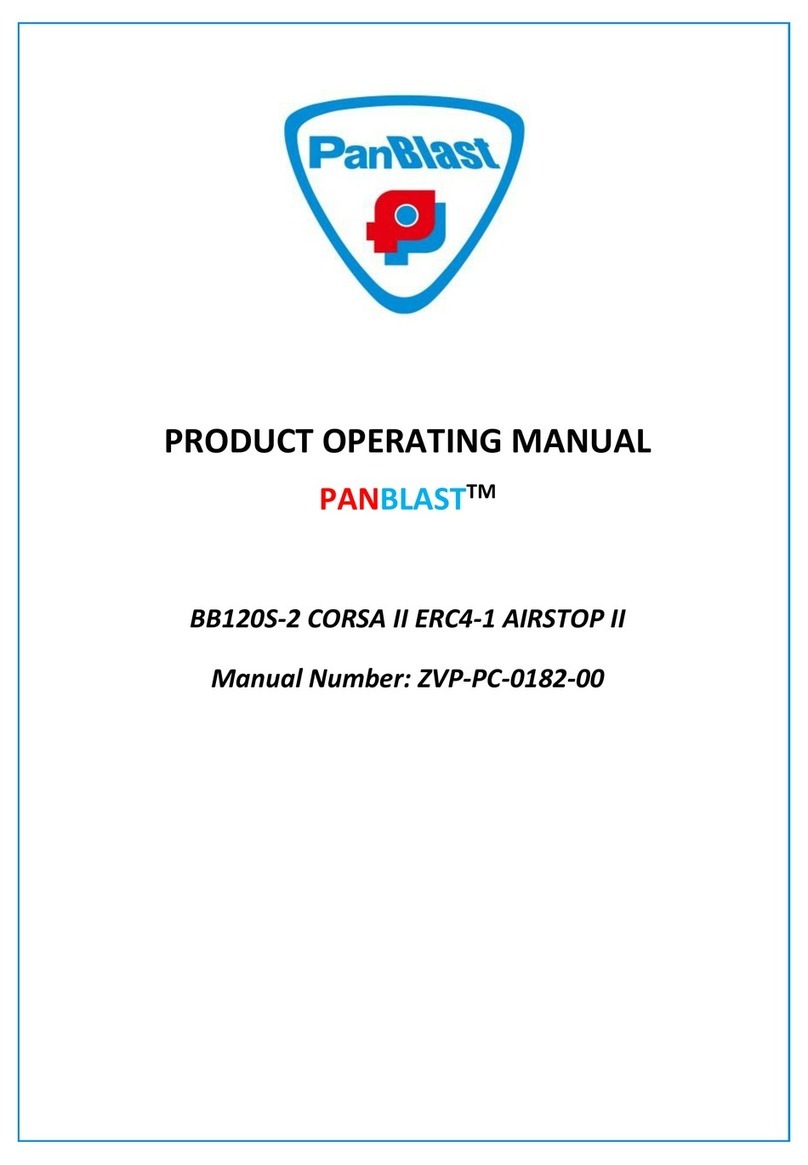
Panblast
Panblast BB120S-2 CORSA II Owner’s Operation and Safety Manual
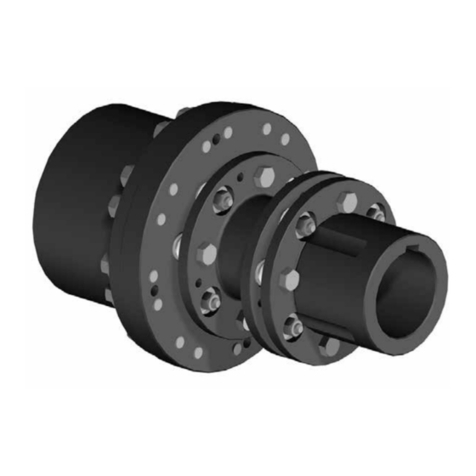
Rexnord
Rexnord Thomas XTSR52 Installation and Maintenance
